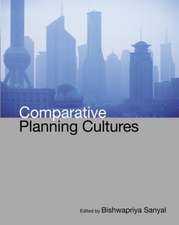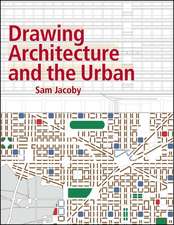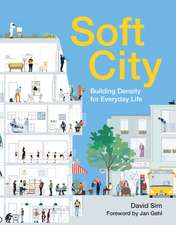Architecture, Participation and Society
Editat de Paul Jenkins, Leslie Forsythen Limba Engleză Hardback – 4 sep 2009
Since the mid 1990s government policy has promoted the idea of greater social participation in the production and management of the built environment but there has been limited direction to the practising architect.
Reviewing international cases and past experiences to analyze what lessons have been learnt, this book argues for participation within other related disciplines, and makes a set of recommendations for architectural practices and other key actors.
| Toate formatele și edițiile | Preț | Express |
|---|---|---|
| Paperback (1) | 327.80 lei 6-8 săpt. | |
| Taylor & Francis – 4 sep 2009 | 327.80 lei 6-8 săpt. | |
| Hardback (1) | 990.59 lei 6-8 săpt. | |
| Taylor & Francis – 4 sep 2009 | 990.59 lei 6-8 săpt. |
Preț: 990.59 lei
Preț vechi: 1368.72 lei
-28% Nou
Puncte Express: 1486
Preț estimativ în valută:
189.57€ • 197.19$ • 156.50£
189.57€ • 197.19$ • 156.50£
Carte tipărită la comandă
Livrare economică 14-28 aprilie
Preluare comenzi: 021 569.72.76
Specificații
ISBN-13: 9780415547239
ISBN-10: 0415547237
Pagini: 236
Ilustrații: 12 tables, 10 halftones and 5 line drawings
Dimensiuni: 156 x 234 x 18 mm
Greutate: 0.66 kg
Ediția:1
Editura: Taylor & Francis
Colecția Routledge
Locul publicării:Oxford, United Kingdom
ISBN-10: 0415547237
Pagini: 236
Ilustrații: 12 tables, 10 halftones and 5 line drawings
Dimensiuni: 156 x 234 x 18 mm
Greutate: 0.66 kg
Ediția:1
Editura: Taylor & Francis
Colecția Routledge
Locul publicării:Oxford, United Kingdom
Public țintă
PostgraduateCuprins
Foreword Jeremy Till Preface. Summary Part 1: Background, Context and Analytical Framework 1. Concepts of Social Participation in Architecture 2. A Brief Historical Review of Community Technical Aid and Community Architecture 3. International Experience 4. Wider Scoping of Relevant Literature Part 2: Illustrative Case Studies 5. Case Studies of Social Participation in Different Building Types in the UK 6. Case Studies of Organisations with Community-Based Practices in the UK 7. Case Studies of Architectural Educational Institutions 8. Case Studies on the Use of Participatory Computer-Based Techniques Part 3: Findings and Recommendations 9. Analysis of Findings 10. Current Challenges and Recommendations for the UK Part 4: Appendices
Descriere
For the first time, this book defines how social participation can be incorporated into architecture in a successful and practical manner, which will better serve both architecture and society.
International cases and past experiences are looked at to analyse what lessons have been learnt, putting forward a set of recommendations for architectural practices and other key actors.
International cases and past experiences are looked at to analyse what lessons have been learnt, putting forward a set of recommendations for architectural practices and other key actors.
















